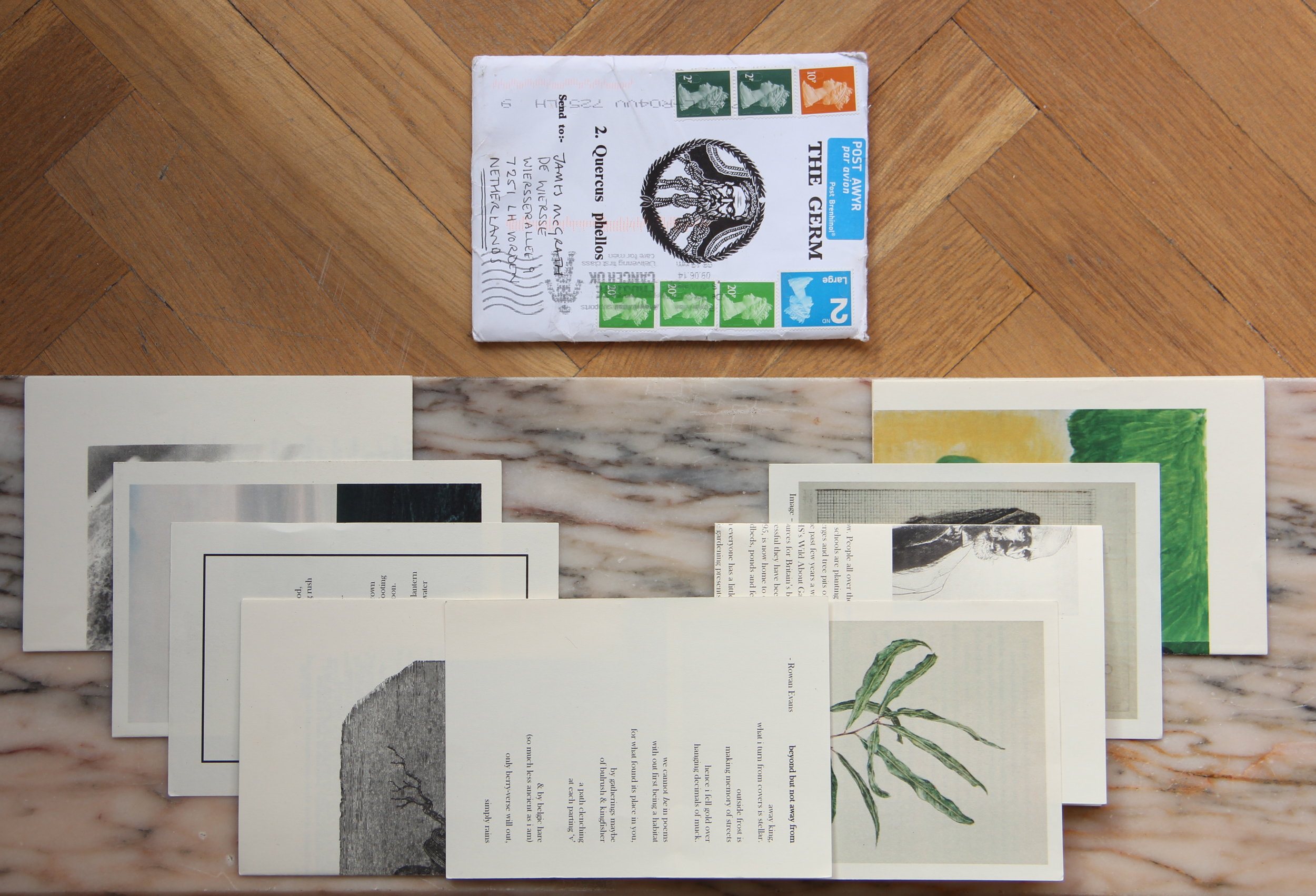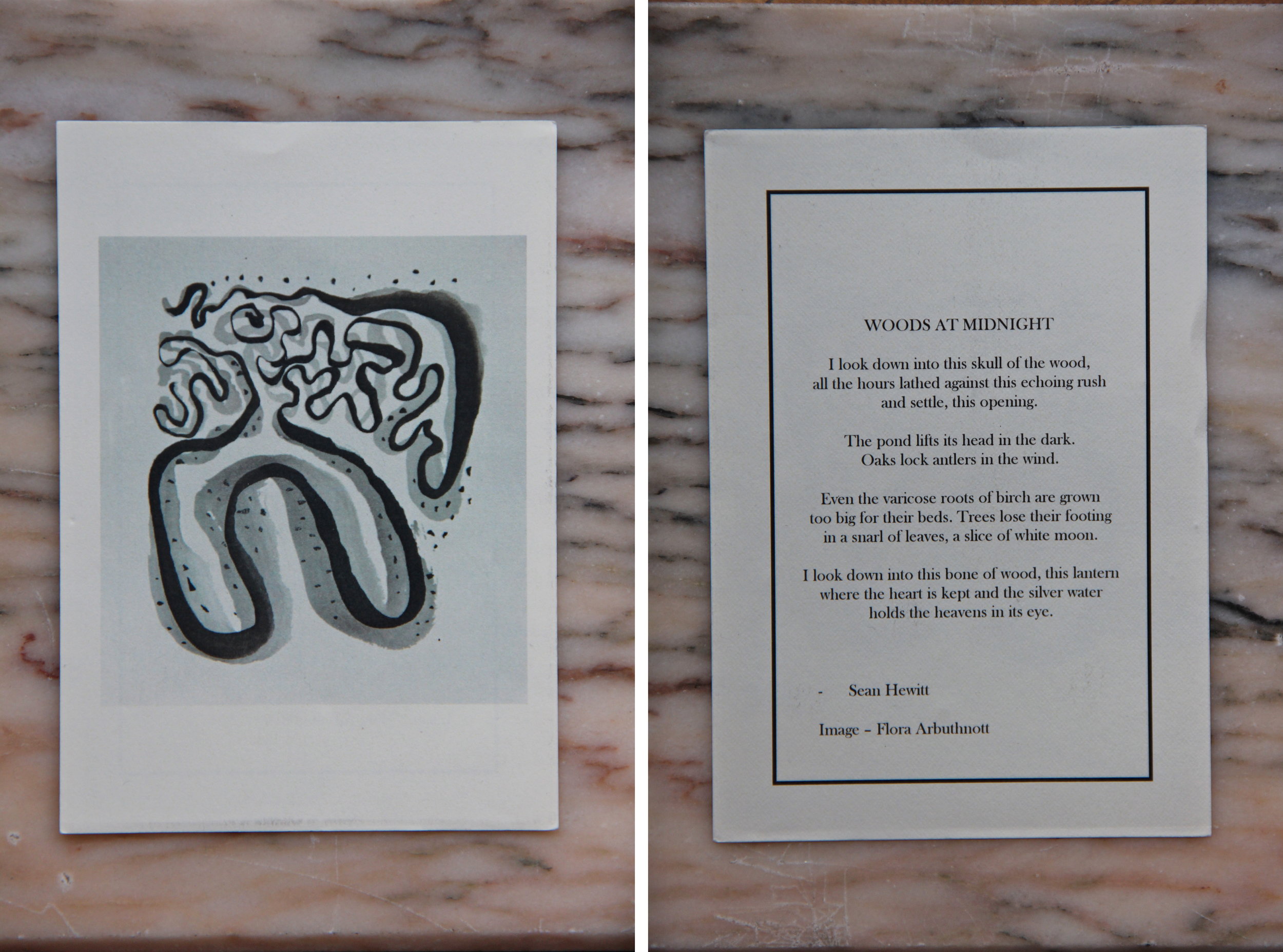5-10-5 Jonny Bruce / The Germ
A wonderful thing about the horticulture world is that it is small one, so you often meet fantastic people of all sorts. I met Jonny through my friend Tom, the head gardener at Gravetye, who put us in contact through email. Jonny spoke about seeing Plinth et al. and suggested I might be interested in receiving a copy of his publication, since it covers subjects that he knew interested me. The interview was a way to get to know more about Jonny, and the work that he does on this personal project of his. I am sure you will find it interesting. - James
The Arts or Horticulture?
With an artist mother my life has been grounded in the arts but as I developed my own thoughts about art and horticulture it seemed that any distinction was a superficial one. Really the two collide and coalesce to such an extent that I really could not say either way.
Thanks Jonny, can you introduce yourself to us.
London born but I grew up first in Stockholm and then Oxford where my family still live. Following this frankly idyllic upbringing I spent three, slightly fraught, years at Cambridge University studying History of Art. To combat the endless hours spent behind a desk I started an allotment in the grounds of my college, Girton. The joy I derived from the time spent on this small plot, as well as some formative gardening experiences had during my long university vacations, convinced me of the need to pursue a career in horticulture. After a year working at the beautiful Aberglasney Gardens in Wales I managed to secure a placement at Great Dixter in East Sussex as the new Christopher Lloyd Scholar, which I began in September.
I also moonlight as a botanical illustrator and edit a small publication about art and horticulture called The Germ.
Your first gardening memory?
Aged 10 stealing Irises from my mother's garden to plant in the school car park as part of an unofficial 'gardening club' - really it was just an excuse for water fights away from the watchful eyes of the teacher on break duty.
What about the first time captivated by a piece of Art or a color?
It is difficult to pinpoint but in terms of a shift from looking at art to thinking about art then Georg Basetlitz's exhibition at the Royal Academy in 2007 was a pretty seismic event.
What is The Germ and how did the name come about?
The Germ is a small, handcrafted publication containing words and images intended to explore the relationship between art, horticulture and the wider natural world. The contents are unbound and contained within an envelope that carries a unique impression of a wood engraving by Duncan Montgomery (http://experimentsonbox.wordpress.com/).
The name has its precedence in the Pre-Raphealite Brotherhood who published a short-lived journal under the same name accompanied by the subtitle “thoughts towards nature in art and literature”. However it really refers to how, hopefully, this small collection can stimulate the germ of new ideas in others.
What are you looking for The Germ to accomplish, for yourself and others?
In an increasingly virtual world I hope that people will find in The Germ a comforting tangibility. There is a joy in receiving any post that hasn't originated at the bank or phone company but when the package has been crafted with such care I feel there is more chance of engaging the reader. The unbound pages are intended to encourage people to dissemble each copy, sticking an image to the wall or passing an article to a friend, without a sense of destruction. I hope that The Germ's pages may find their way into new envelopes and with such a limited print run we depend on this organic dissemination to engage with a wider audience.
It's a beautiful mix of content, what’s the thought process when putting an edition together? Is there a theme or common thread that runs through it?
Our relationship to the natural world is the only common thread, I find specific themes can often have a frustratingly restrictive effect on submissions and tend to appear contrived.
When it comes to the artistic content you said that there must be some connection, albeit a loose one, to the natural world. When looking for submissions, what is it you look for and how can people submit?
Diversity and innovation are important however when submissions strive for the latter they often end up appearing superficial and really the best submissions I receive are the ones that seem most honest. One of my favourite submissions was from a nine year old of a Birch under a yellow sky, it was perfect.
When my first copy arrived in the mail, I was astounded by the details printed on the envelope alone. How do you get the images and content so beautiful?
The envelope I have to credit to Nigel Williams of J.W. Thomas & Sons in Llandeilo, Carmarthenshire and his original Heidelberg Press. Without his skill and patience no copy of The Germ would have appeared and I am sorry to think that, with no one to pass on his trade to, his is a dying art.
In terms of content the best answer is time. The Germ is not monthly or quarterly, I simply wait until I have enough material that I can put together to produce something exciting.
How often do you produce The Germ and how or where can people find it?
The Germ is published as and when I am happy with the content, that can be a few weeks or a few months but considering its lack of price tag I hope that does not put people off. The best way to find out about The Germ is to contact me by email (jbruce210@gmail.com) or, preferably, by letter at: Jonny Bruce, Great Dixter House and Gardens, Northiam, Rye, East Sussex, TN31 6PH.
We love your passion for two subjects that we greatly admire. I’d love to hear your explanation on why you think the connection between art and horticulture is so important.
Horticulture represents our most dynamic engagement with the natural world. At a time of unprecedented environmental change it is vital that we reconsider our relationship to the nature and with the fickleness of politicians and the media I feel art has the ability to shine a revealing light.
With botanical illustration, which plant subjects catch your attention? And your preferred medium?
As a gardener you spend a lot of time simply looking at the plants and every so often one just seems to leap out in such a way that I can imagine it on the page. I like to think of botanical illustration as a conversation so really it is about choosing which plant I want to talk to. My preferred medium is watercolour.
You are now a Christopher Lloyd Scholarship recipient, Congratulations. Great Dixter is a phenomenal place for creative minds. How are you enjoying the beginning of your 2 years living, working and learning at Dixter?
I have only been here a few weeks but already whole areas of the garden have changed and the colour is astonishing. In my first week Fergus had us moving enormous clumps of Aster, Crysanthemum and Helianthus, mostly in full flower, from stock beds to revitalize those tired corners that would be left in many gardens. It is certainly an incredibly stimulating place to work and I just hope I can get as much from my two years here as possible.
What or who, artistically or in the world of horticulture, is inspiring you?
Dixter is an amazing melting pot for all sorts of interesting ideas and people who provide a constant source of inspiration. Few gardens achieve such an exciting visual result whilst maintaining such genuine concern for wildlife and the environment. Walking along the Long Border, the vibrancy of all the plants and animals makes you see and connect with nature in a different way. Artistically, although totally devoid of life, I find James Turrell's work have a similar power to change one's perception of the world.
A garden, public or private, that continuously inspires you?
Being on the Sussex/Kent border also means I am close to one of my greatest influences, Derek Jarman. His garden at Prospect Cottage formed the focus of my university dissertation and continues to be source of inspiration. Aberglasney Gardens in Wales, where I spent the past 12 months, has also been key in forming my ideas on horticulture and the direction the current head gardener, Joseph Atkin, is taking the garden is a very exciting.
Do you have specific creative outlets that you often turn to?
Drawing and painting are my main outlets. Drawing is a totally meditative experience and really the only time I lose total awareness of the clock. The Germ is also wonderfully creative, I love bringing together and engaging with other people's thoughts, it never fails to stimulate new ideas.
Gardening and engaging with the natural world, what is it that appeals most to you?
A connection to something physical. There is something essential in the act of gardening that draws you into a closer conversation with the nature, a conversation I find deeply comforting. I feel a great deal of the anxiety associated with modern life is tied up with the loss of the natural in an increasingly virtual world.
Left on an island you must choose one plant and piece of art to keep with you, what would you choose?
An impossible question but possibly Agave for their delicious nectar and useful fibres but also for their fascinating structure and monumental flower spikes. There is a particularly nice specimen of A. victoriae-reginae at Prospect Cottage which has to be one of the best looking Agave species.
Leave us with a favorite quote you admire..
"The gardener digs in another time, without past of future, beginning or end. A time that does not cleave the day with rush hours. Lunch breaks, the last bus home. As you walk in the garden you pass into this time – the moment of entering can never be remembered. Around you the landscape lies transfigured. Here is the Amen beyond the prayer" - Derek Jarman, Modern Nature.
At present time, the next free edition of the Germ is complete and is ready and waiting to be sent out. If you are interested in receiving the 3rd edition, please send a message to Jonny saying so, either by email: jbruce210@googlemail.com
or by letter: Jonny Bruce, Great Dixter House and Gardens, Northiam, Rye, East Sussex, TN31 6PH
Thank you so much Jonny for agreeing to do this interview. What you do and what you have created is a treasure and I wish you continued success with your special and beautifully done publication, The Germ. - James
* Click here for an article written by Jonny about The Golden Age of Botanical Art*


















